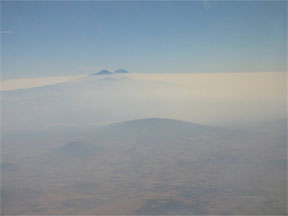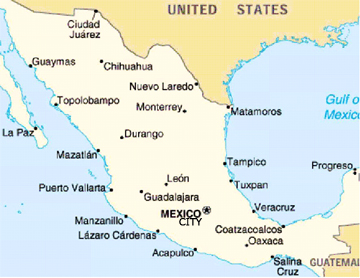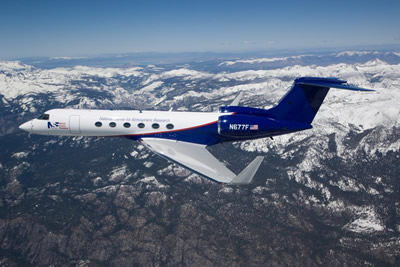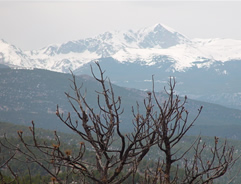Air Pollution can impact visibility in remote areas as well as in cities.
Click on image for full size
Source: T. Eastburn
Air Pollution and Atmospheric Visibility
Would you be surprised if smoke from a fire stopped you from seeing nearby buildings or mountains? Probably not. What if there was no fire, and a brown or gray haze filled the sky. Would you be surprised not to be able to see nearby buildings or mountains then?
Smog is the term that is used for such haze in the sky. Sometimes, the sky is so smoggy that visibility is limited. It happens most often in large cities with many people, but smog can also travel to other areas with the help of the wind.
When smog is in the sky, sunlight can have trouble shinning through it. As a result, the climate of the area can be changed by smog. A reduction in sunlight may not be the only thing air pollution reduces. Scientists are researching the possibility that it may also inhibit rainfall.
More clouds usually mean more rain, but not always, especially with certain specks of air pollution. Resent research findings report that particles of soot are often too small to produce raindrops large enough to hit the ground. This is unfortunate, because rain is one way to wash dust, soot, and chemicals from polluted air and allow mountains and buildings near and afar to be seen.
For now, however, more research needs to be done. Scientific field campaigns such as MILAGRO are how scientists gather information about air pollution and its harmful effects on visibility, rain, climate, and so much more. So if rain isn't in the forecast on a smoggy day, it may be best to hope that the wind blows in and the smog blows out.
Last modified February 19, 2006 by Teri Eastburn.
You might also be interested in:

Have you ever heard of air pollution? Air pollution is not new. 700 years ago, when people started burning large amounts of coal 700 years ago in London, England, they complained about the dust and soot
...more
Did you know that air pollution can hurt people, animals, buildings and even plants!? Air pollution makes it hard to see and hard to breathe. It can also affect our weather and climate. We need to study
...more
When you look up at the sky, you are looking at more than just air. There are also billions of tiny bits of solid and liquid floating in the air. These tiny particles are called aerosols or particulates.
...more
Rainbows appear in the sky when there is bright sunlight and rain. Sunlight is known as visible or white light and is actually a mixture of colors. The sun's rays pass through millions of raindrops. A
...more
It takes the Earth one year to travel around the sun one time. During this year, there are four seasons: summer, autumn, winter, and spring. Each season depends on the amount of sunlight reaching the
...more
Scientists sometimes travel in airplanes that carry weather instruments in order to gather data about the atmosphere. These research aircraft bring air from the outside into the plane so scientists can
...more
An anemometer is a weather instrument used to measure the wind (it can also be called a wind gauge). These instruments can be used in a backyard weather station or on a well-equipped scientific research
...more















